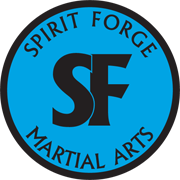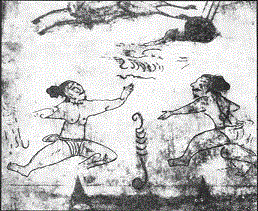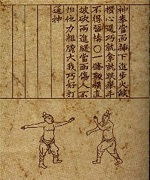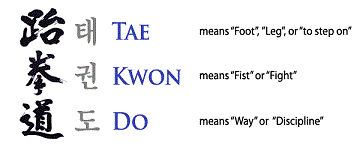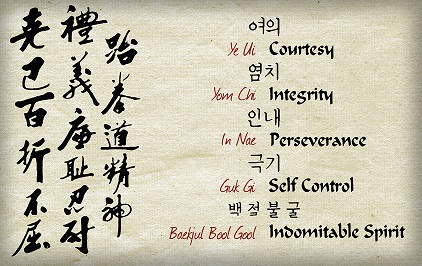The Korean martial art of Taekwondo (태권도) emerged in the mid-twentieth century and has subsequently become one of the most widely practiced martial arts in the world with over sixty-million practitioners. Taewkondo’s roots extend well into the past and draw upon indigenous Korean martial arts (Yu Sul, Kwon Bop, Taekkyon, Su Sul, Su Bak, Ssirium,…) for its techniques. Taekwondo was also influenced by Japanese Karate and Jui-Jitsu.
In April of 1955, the masters of several Korean striking martial arts schools, or kwans- Chang Moo Kwan, Chang Do Kwan, Ji Do Kwan, Moo duk Kwan and Song Moo Kwan-met and adopted the umbrella name, Taekwondo, for all Korean hard-style striking martial arts schools. Taekwondo was favored due to its phonetic similarity to Taekkyon. Eventually, many Korean striking adopted the name Taekwondo, although a few, notably Tang Soo Do, did not.
Taekwondo, literally, “foot hand way,” or,” the way of striking with the foot and hand,” is characterized by dynamic kicking, punching and striking techniques which are utilized in free sparring, kyorugi (겨루기), formal exercise, poomsae (품새), self-defense, hoshinsul (호신술), and breaking, kyukpa (격파).
Emphasis is placed on mobility, flexibility and the precise execution of technique. Students learn basic techniques, kibon kisool (기반 기술), then graduate to formal exercise, poomsae, then, when they have achieved sufficient skill, engage in free sparring, kyorugi. This curriculum forms a strong basis for both students interested in acquiring effective self-defense skills and those interested in competition.
Taekwondo is not merely kicking and punching; it is a martial discipline strongly influenced by the Asian practices of Buddhism, Taoism and Confucianism. Respect for one’s fellow practitioners, school and teachers form the very foundation of Taekwondo. The influence of Confucianism is seen in the code of conduct which governs the behavior of Taekwondo practitioners, summarized in The Five Tenets of Taekwondo: Courtesy, Integrity, Perseverance, Self-Control and Indomitable Spirit. Taekwondo Palgwae (팔괘) and Taegeuk (태극) poomsae mirror the eight trigrams of the Taoist text, the I Ching, the Chinese Book of Changes.
Since it stepped onto the world stage, Taekwondo has developed into a competitive martial sport which is now practiced worldwide. It has been included in the Olympic Games since 1988. Olympic competition, under the auspices of World Taekwondo (WT) is currently limited to full contact sparring in which participants wear protective equipment Competition is fierce, characterized by rapidly executed kicking techniques performed with uncanny grace and precision. Taekwondo poomsae competitions are held at the state, national and, since 2006, international level. Spirit Forge Martial Arts teaches Taekwondo under the authority of the Kukkiwon, the global Taekwondo Headquarters, and World Taekwondo. Taekwondo instruction and practice at Spirit Forge Martial Arts incorporates both traditional and contemporary training methods.
To help others to develop and succeed in life is a reward itself and only has value if nothing is expected in return.
–Grandmaster Choi Hong Hi
